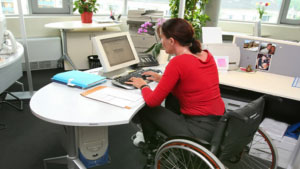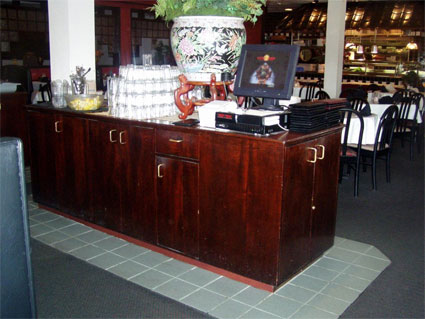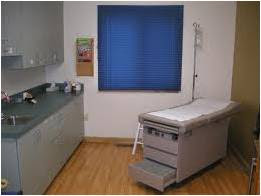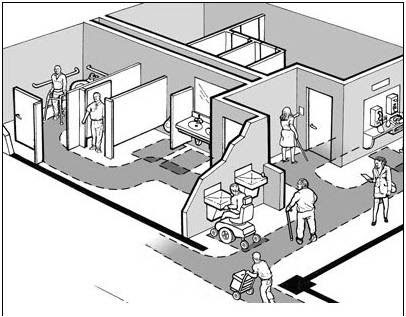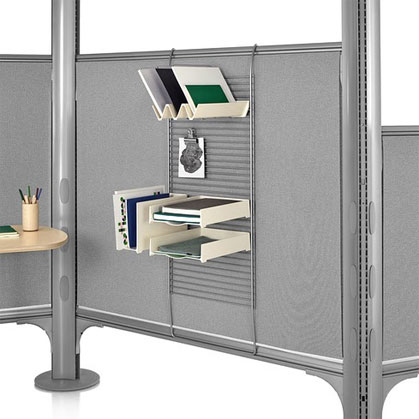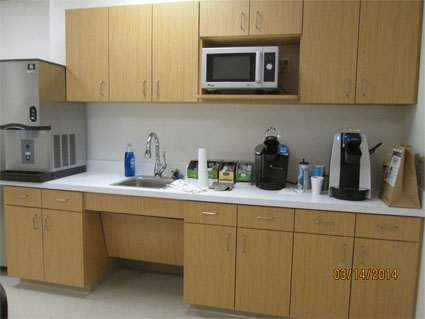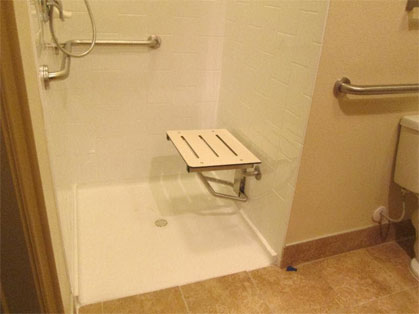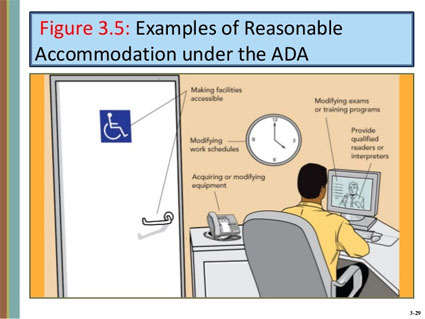Employee Work Areas
Posted on - Monday, August 2nd, 2021Accessible Work Areas
Thank you to Marsha Godeaux from TDLR for taking the time to explain about employee work areas. Click here to watch the video.
This newsletter will cover Employee work areas. There is a misunderstanding that work areas are not required to comply with the ADA or TAS Standards. We will explain what is required to comply within work areas and what is exempted. Keep in mind that the requirements we are covering are only the 2010 ADA Standards and the 2012 Texas Accessibility Standards. The ABA which covers Federal Facilities do not have the same requirements.
What is a Work Area?
Employee Work Area. All or any portion of a space used only by employees and used only for work. Corridors, toilet rooms, kitchenettes and break rooms are not employee work areas.
Work Area Equipment. Any machine, instrument, engine, motor, pump, conveyor, or other apparatus used to perform work. As used in this document, this term shall apply only to equipment that is permanently installed or built-in in employee work areas. Work area equipment does not include passenger elevators and other accessible means of vertical transportation.
Work cubicles are part of a work area
a Point of Sale counter is considerd a work area as long as the public is not required to approach it.
What are the requirements?
203.9 Employee Work Areas. Spaces and elements within employee work areas shall be designed and constructed so that individuals with disabilities can approach, enter, and exit the employee work area.
The image above summarizes the approach, enter and exist requriement
An example of a work area that only requires an approach, enter and exit would be a janitor’s closet. Elements within the janitor’s closet such as the faucet for the mop sink will not be required to comply.
An exam room is partially a “work” area and partially a “patient” area. The area that is only used by the doctor (the sink) will be exempted from having to comply.
What are some exceptions?
Employee work areas, or portions of employee work areas, other than raised courtroom stations, that are less than 300 square feet and elevated 7 inches or more above the finish floor or ground where the elevation is essential to the function of the space shall not be required to comply with these requirements or to be on an accessible route.
This toll booth is less than 300 s.f. and elevated more than 7″ a.f.f. and therefore do not require an accessible route to it or the ability to approach it and enter it.
Common Circulation Path
In addition to approach, enter and exit, if the employee work area is larger than 1,000 s.f.. then a common path within the work area to common use spaces shall be provided
206.2.8 Employee Work Areas. Common use circulation paths within employee work areas shall comply with 402.
A “common” circulation path is one that is used by more than one person and not intendend for work
Section 402 states that a minimum 36″ width shall be provided along the circulation path.
EXCEPTIONS:
1. Common use circulation paths located within employee work areas that are less than 1000 square feet (93 m2) and defined by permanently installed partitions, counters, casework, or furnishings shall not be required to comply with 402.2.
This raised work area is allowed since the work area is less than 1,000 s.f.
If the path is around work area equipment, then it will not have to comply with the 36″ clear width.
This commercial kitchen has equipment that is an integral part of the work area. The 36″ min. circulation path in this space is not required to comply due to the location of the work area equipment.
Protruding Objects
Even though the only requirement for a work area is “approach, enter and exit”, it also requires that circulation path be provided. Part of the circulation path has to make sure there are no protruding objects projecting onto the circulation path more than 4″. This requirement are for any employee or visitor to the employee area that might be visually impaired.
the filing system is located along the common circulation path inside the office space and projects more than 4″ onto the circulation path.
What about other employee areas that are not work related?
The requirements thus far have been for areas that are considered part of the “work” areas in a space. But there are other areas that are also part of an employee area, but are not related to the work they perform. Those areas that are NOT related to their job description will not be exempted and must comply. Below are a few examples of areas that might be for employees only, but must be fully compliant with the Standards:
Break Rooms
even though a break room is not a public area, it is still required to comply with the ADA and TAS because it is not considered a “work” area, but rather a space where they take a break from work.
LEED employee shower and employee restrooms
an employee shower or even an employee restroom are also not considered “work” areas and must comply.
Employee Locker Room
The lockers as well as the bench in this locker/dressing room must comply with the Standards
What happens when an employee is disabled?
The Standards sometimes provide additional guidance through “advisories”. These are NOT requirements, but they are suggestions that might make your design a better one. Below are some of the advisories on work areas:
Advisory 203.9 Employee Work Areas. Although areas used exclusively by employees for work are not required to be fully accessible, consider designing such areas to include non-required turning spaces, and provide accessible elements whenever possible.
Under the Title I of the ADA, employees with disabilities are entitled to reasonable accommodations in the workplace; accommodations can include alterations to spaces within the facility. Designing employee work areas to be more accessible at the outset will avoid more costly retrofits when current employees become temporarily or permanently disabled, or when new employees with disabilities are hired.
 Abadi
Abadi 


